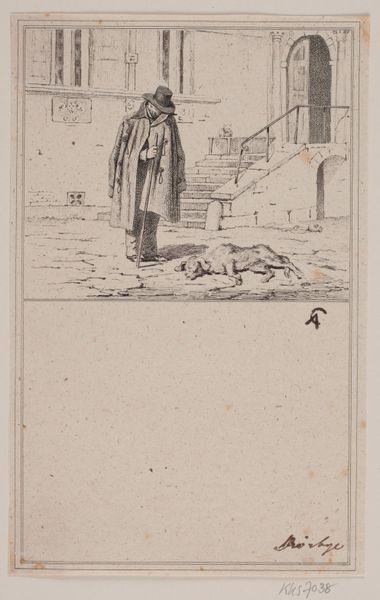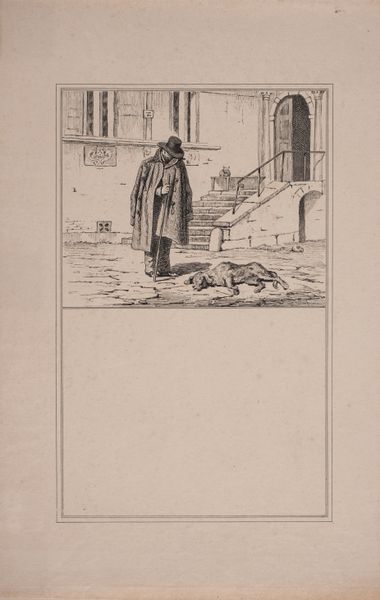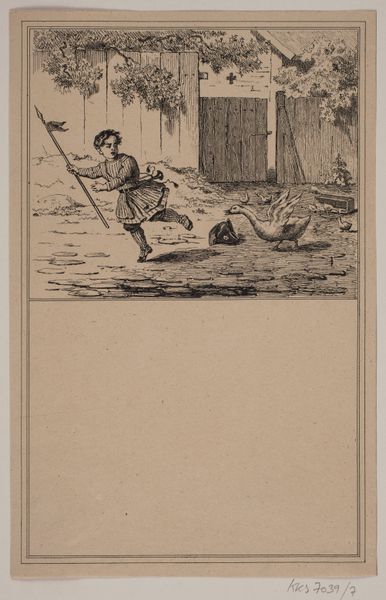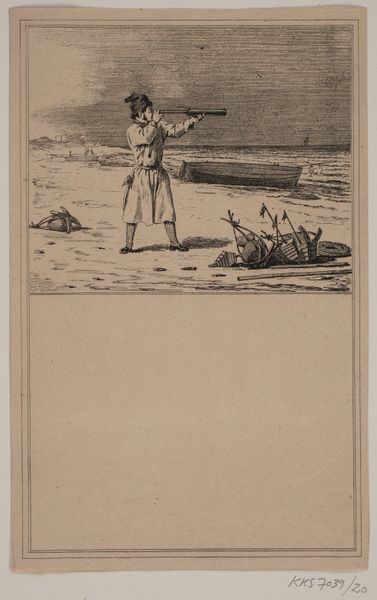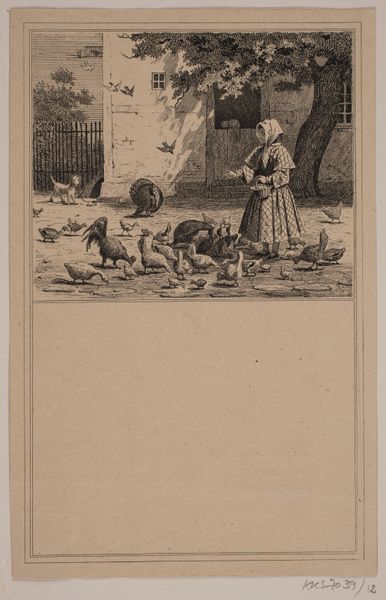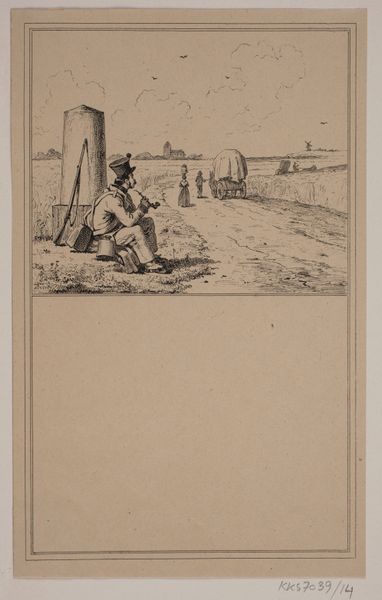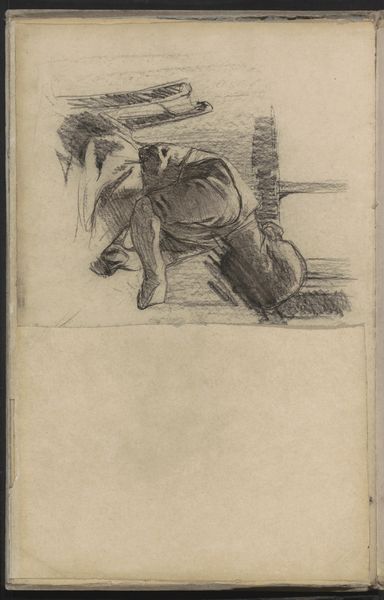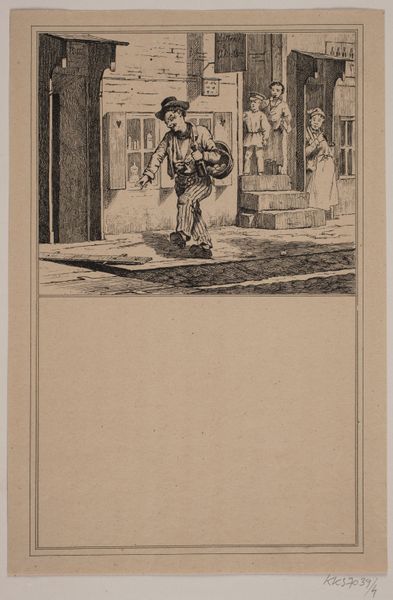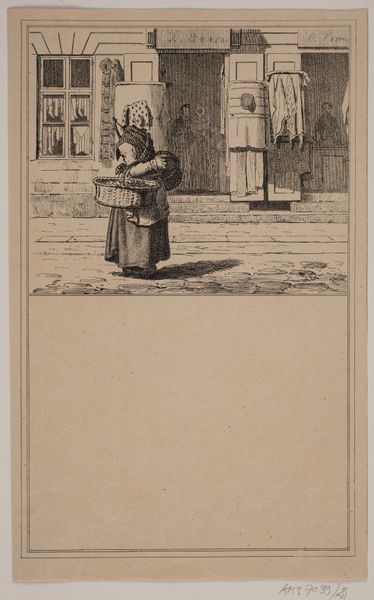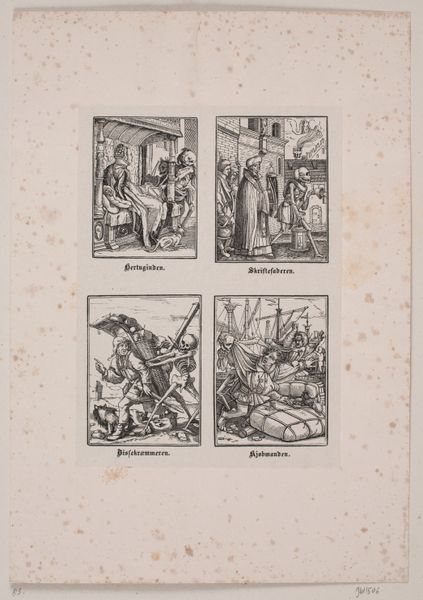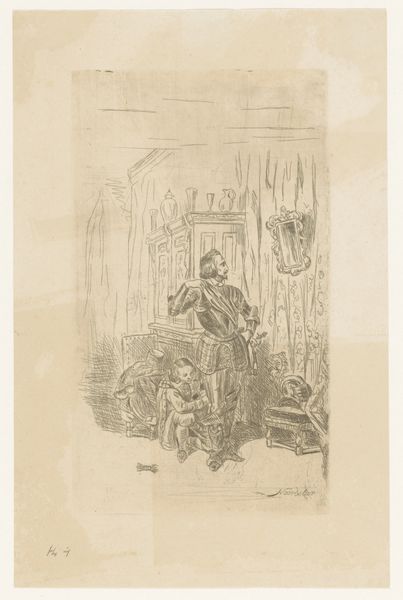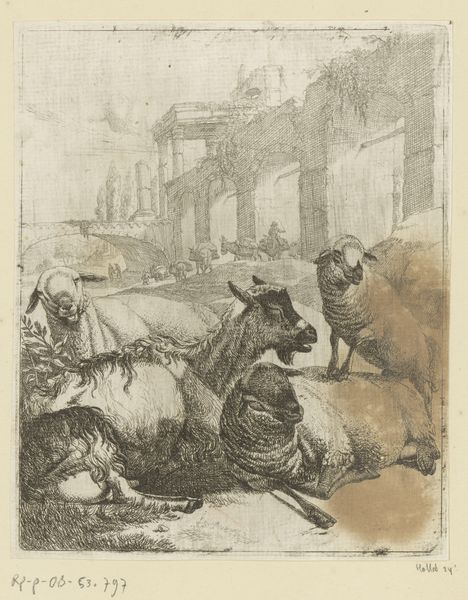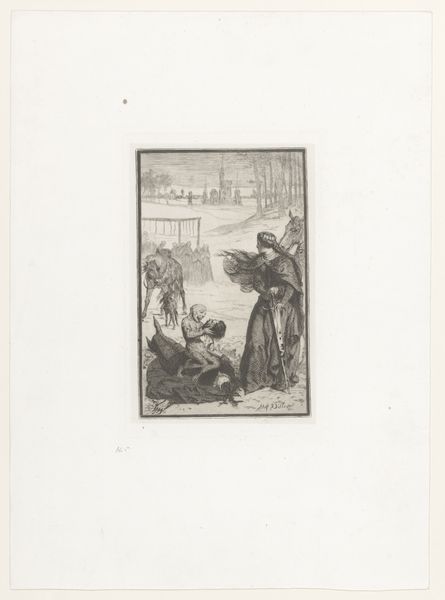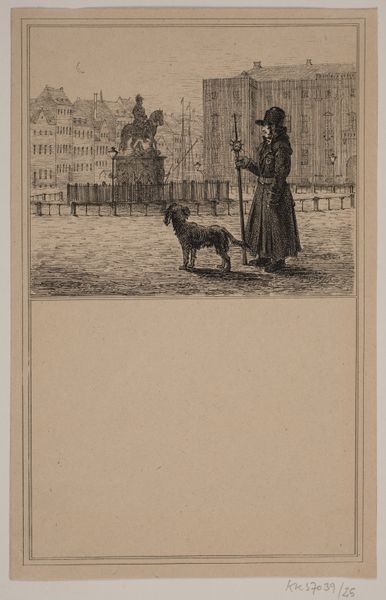
Den døde hund. Nr. 2 i Chr. Winther og M. Rørbye, "25 Billeder for små børn" 1846
0:00
0:00
drawing, lithograph, print, paper, ink
#
drawing
#
lithograph
# print
#
landscape
#
figuration
#
paper
#
ink
#
romanticism
#
genre-painting
Dimensions: 205 mm (height) x 130 mm (width) (brutto)
Adolph Kittendorff etched “The Dead Dog” as part of a series for children. Observe the fallen dog, its limbs splayed, a stark emblem of mortality in an otherwise serene courtyard. The motif of the dead animal has haunted art since antiquity. Think of the sacrificed animals in ancient Roman reliefs, or the still life paintings of the Dutch Golden Age, laden with symbolic weight. But here, the context shifts. Death intrudes not as a grand sacrifice, but as a common, desolate reality. The bent figure, a man in heavy cloak, leans on a cane. The curve of his posture echoes the dog's lifeless form, a visual rhyme connecting man and beast in the shared experience of earthly suffering. This empathy transcends time. We see echoes in depictions of mourning figures from diverse eras, each embodying a universal response to loss. Kittendorff touches a nerve deep within the collective psyche, reminding us of death's inevitable presence, a somber, cyclical rhythm that echoes through our shared cultural memory.
Comments
No comments
Be the first to comment and join the conversation on the ultimate creative platform.
